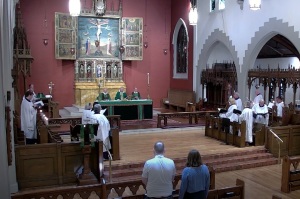SpaceX Rocket Launch Leaves Ghostly Trail Spooking Southern California Residents
A recent SpaceX rocket launch in Southern California had an unexpected effect when it left behind a ghostly trail that spooked nearby residents. The rocket was reportedly hauling a group of telecom satellites into Earth's orbit but instead of a massive plume of smoke, it left a strange, morphing orb glowing in the night sky.
The rocket took off from Vandenberg Air Force Base in central California causing a flurry of activity on social media thanks to the trail. SpaceX CEO Elon Musk joined in the fun posting an image of the trail on Twitter with the caption "Nuclear alien UFO from North Korea."
However, not everyone was aware of the trail's origins. In fact, many residents were unaware that a rocket launch occurred that day leaving them spooked and mystified by the strange phenomenon. Fortunately, scientists were quick to provide an explanation.
"Water vapor from the aircraft engine exhaust is immediately exposed to very cold temperatures at very high altitudes," writes meteorologist and Forbes contributor Marshall Shepherd. "The impurities in the exhausts and the very cold temperatures are the perfect recipe for a condensation trail."
Nevertheless, the buzz it caused is certainly a great way for SpaceX to get some free advertising. The launch was the space firm's 18th and final launch for the 2017 calendar year making it the busiest private-sector rocket company in the world.
Musk, being the showman that he was, used the buzz created by the launch to promote the company's next big feat: the launch of the Falcon Heavy rocket. Not that it needed it though given that he also announced that he will be launching his own Tesla roadster to Mars using the massive rocket.
SpaceX hopes that the Falcon series rockets will replace the now-defunct Space Shuttles and the Russian Soyuz as NASA's go-to vehicle when sending astronauts and supplies to space. Like the Space Shuttle, the Falcon series will also utilize reusable rocket parts to reduce the cost of space travel.




























